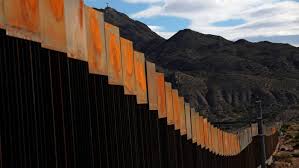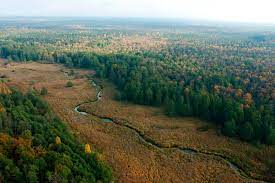Around the world we are in a period where there are lots of people struggling where they are. Whether due to weather or war or crime, there are significant numbers of people who are on the move. Perhaps the most famous is the border wall that Donald Trump ran on. Given that almost all of the people who are illegally in the USA arrive legally and then fail to leave, cutting off the stream of people fleeing violent crime in central America will make little difference to what is going on.

Indeed, any significant look at the immigration situation in the USA shows that for many people more migration would be good. Furthermore, a border wall is not only one of the must ridiculously expensive methods, but is also unlikely to make much of a dent in the number entering this way.
A bigger problem is the fact that this wall slices an ecosystem in half. The border wall is highly likely to kill off the small populations of animals like Ocelots, and the few remaining Jaguars will likely be the last in the USA (few people realize that Jaguars are native to the USA).
Unfortunately, Donald Trumps mistakes are busily being copied by people elsewhere. One of the last most intact ancient forests in Europe straddle the border between Poland and Belarus. The BIalowieza Forest is an incredibly important area for Europe’s biodiversity with important populations of boar, wolves, bison, lynx deer and moose among many others. While bears were hunted to extinction in the past, they have populations not far away, and have been making more and more frequent visits.

Indeed, a coiled roll of barbed wire already dissects this ancient woodland. The problem is that the large predators of Europe require large areas to retain viable populations. Each member of these population needs the space to hunt and raise young. As such, by cutting the forest in half, it is likely that many of the species which call this ancient woodland home will die off.
But there is a bigger problem.
Eastern Europe has far more of its wildlife populations intact (indeed this woodland was the last refuge of the Eurasian Bison – an animal which is thankfully recovering, with many reintroduction projects going on across Europe – but if cut in half the Bison would likely be extinct) and as western Europe has started to adopt more wildlife friendly policies and limit hunting, large carnivores have started to move back in. While small populations of wolves and bears survived both on the Iberian peninsular, and in the of Italy, this often have passed through small bottlenecks in their population. As such natural migration of animals from Eastern Europe, allows this whole population to be far healthier.
It is already hard for these animals to migrate from Eastern Europe into Western Europe as a result of a group of mid European countries (Austria, Czech republic, Hungary, and Switzerland) which are particularly keen on hunting, which means that migrants rarely successfully cross this land. Given some space, some of these countries include Alpine countries so a recovery of these wild species would likely happen fast.
If this new fence on the border of Poland cuts of the northern migratory route, the recovery of the ecosystems western Europe will take longer. It is incredibly difficult to create a human proof barrier along a border without blocking the movement of animals as well.
